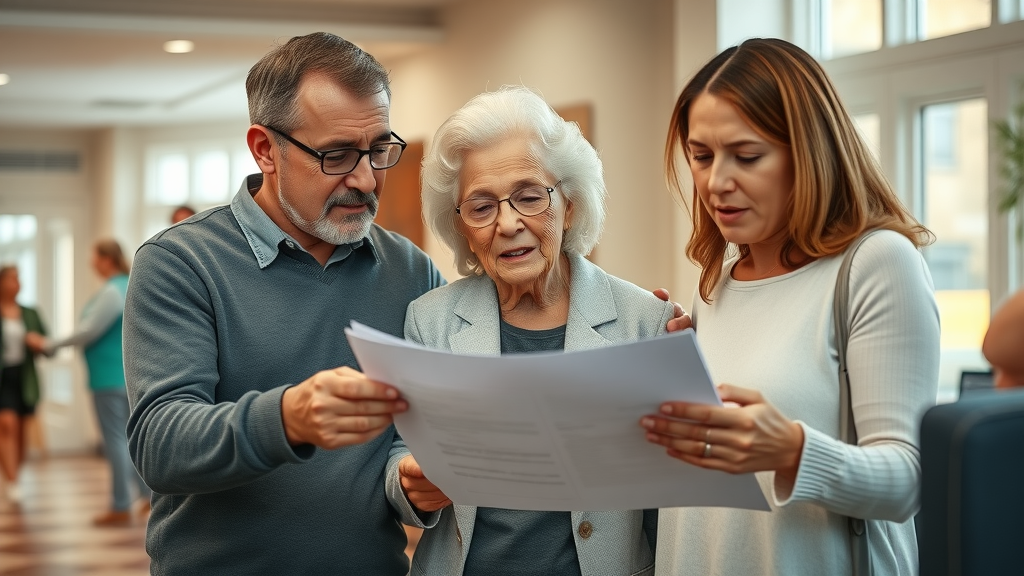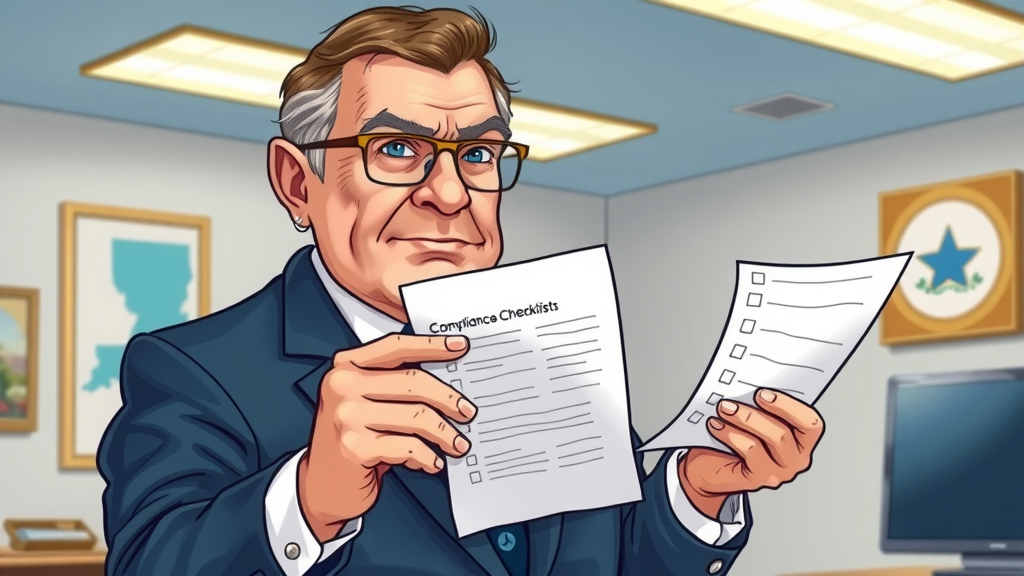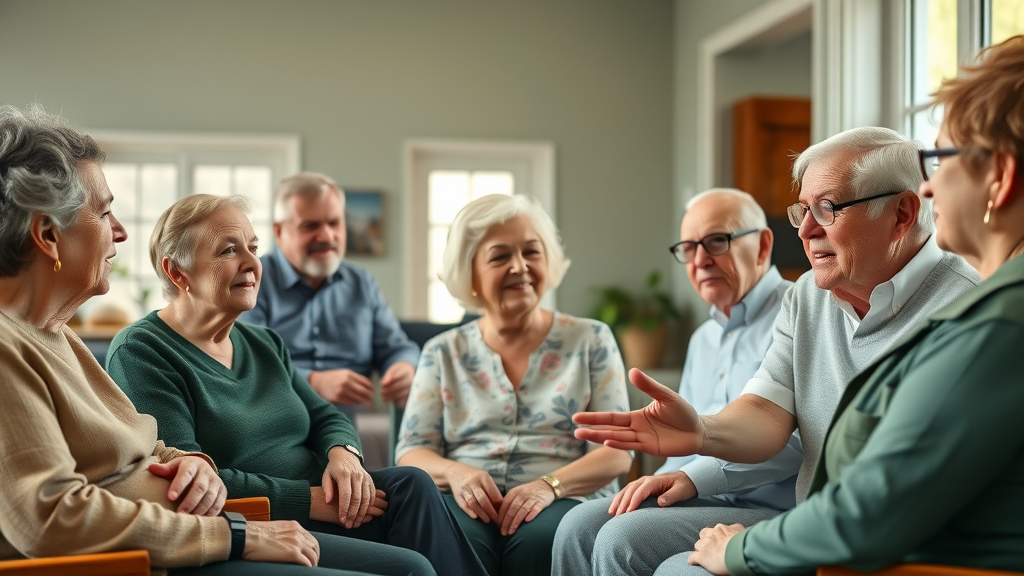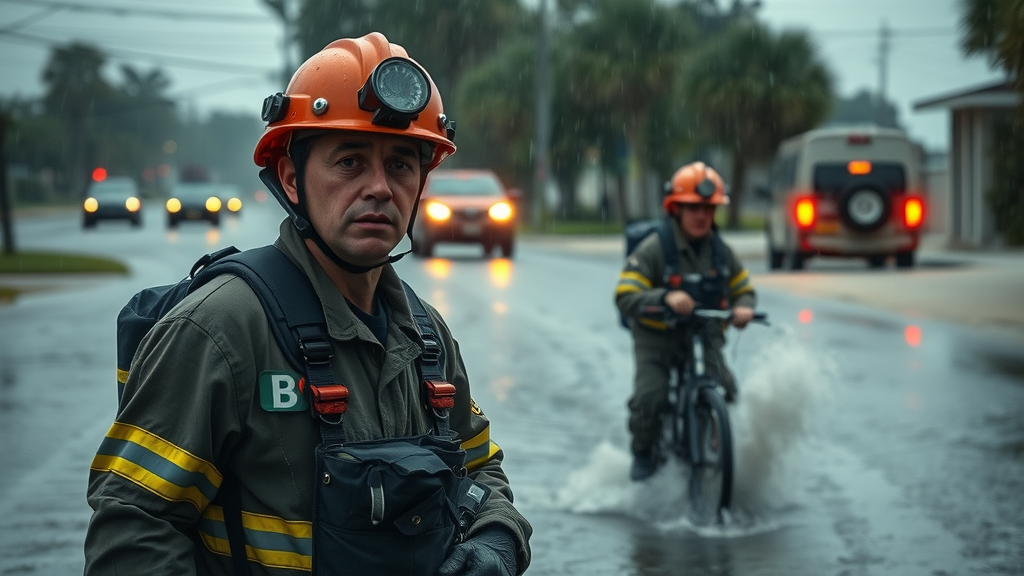Did you know that nearly 60% of nursing homes in Louisiana have been cited for safety or health violations in just the past five years? This concerning statistic underscores the real and pressing risks our seniors face in the very facilities entrusted with their care. Whether you’re starting your search or already have a loved one in a facility, understanding nursing home safety standards Louisiana is crucial. This guide equips you with the knowledge, tools, and confidence to demand and ensure safe, quality care for your loved ones—backed by recent rules, practical checklists, and the latest regulatory updates. Ready to take control? Read on and become your family’s best advocate.
Understanding Nursing Home Safety Standards Louisiana – Why Compliance Is Critical
-
In Louisiana, nearly 60% of nursing homes have received violations for safety or health standards in the last five years—highlighting the real risks residents face.

-
This guide demystifies nursing home safety standards Louisiana, equipping you with tools to evaluate and protect your loved ones.
-
Explore practical examples, recent updates to Louisiana nursing home rules and regulations, and crucial steps for selecting a safe nursing facility.
Nursing home safety standards Louisiana are designed to protect vulnerable seniors—but when facilities fall short, the consequences can be severe: from preventable accidents to outbreaks of illness and diminished quality of life. The reality is harsh—many facilities operate under tight resources and staff shortages, increasing the risk of safety lapses. Families must be vigilant and proactive, asking tough questions and knowing exactly what to look for. This guide offers step-by-step insights, exposing not only how to evaluate compliance but also what immediate actions to take if standards aren’t properly met. With ongoing changes in regulations and enforcement protocols, staying informed is not just wise, it’s essential for peace of mind and resident well-being.
What You'll Gain: Navigating Nursing Home Safety Standards Louisiana
-
How Louisiana nursing home rules and regulations are enforced
-
Key aspects of emergency preparedness and the requirements of a preparedness plan
-
Recognizing red flags in nursing facilities and nursing homes
-
Quick comparison of Louisiana nursing home and national standards (see table below)

By the end of this article, you’ll understand how the state of Louisiana and federal agencies enforce safety and health regulations. You’ll gain clarity on emergency preparedness standards, learn to spot warning signs of neglect or unsafe conditions, and discover the best ways to confirm a facility’s compliance. A comparison table will help you see exactly where Louisiana stands versus national expectations, empowering you as an informed decision-maker.
Key Louisiana Nursing Home Safety Standards and Regulations
State and Federal Nursing Home Safety Standards Louisiana Must Meet
-
Overview of how the state of Louisiana and federal governments set standards for nursing homes and nursing care
"Both state and federal standards serve as powerful guardrails, ensuring nursing facilities remain havens of health and dignity for Louisiana seniors."

The nursing home safety standards Louisiana residents rely on are the result of combined oversight by state and federal authorities. The state of Louisiana , through the Louisiana Department of Health, issues licenses, sets minimum safety, staffing, and care requirements, and conducts regular inspections. At the federal level, the Centers for Medicare & Medicaid Services ( CMS ) establishes guidelines that facilities must meet to participate in the Medicaid program and receive vital funding. These standards govern everything from staff training, resident privacy, safe environments, medication management, to emergency response protocols. Importantly, compliance with both state law and federal requirements is not optional—failure to meet safety benchmarks can result in license suspension, loss of funding, or even closure.
For a nursing home or nursing facility in Louisiana to remain operational, it must pass both scheduled and surprise inspections, with deficiencies publicly reported. By enforcing these dual sets of rules and regulations , authorities aim to create a safety net around seniors in term care, ensuring facilities aren’t simply focused on profits, but on real, quality health care outcomes and resident dignity.
Mandatory Emergency Preparedness Plans in Louisiana Nursing Facilities
-
Detailed breakdown of emergency preparedness plan requirements
-
Best practices for evaluating disaster protocols in local nursing homes

Every licensed Louisiana nursing home must have a comprehensive emergency preparedness plan —a document covering everything from evacuation routes and staff assignments to communication protocols and backup supplies. These plans must be reviewed annually and drilled regularly, with updates filed after every significant incident or regulatory change. The preparedness plan should demonstrate that staff members are equipped to address hurricanes, floods, fires, power outages, and medical emergencies, reflecting Louisiana’s challenging climate and history.
When evaluating a nursing facility , families should ask direct questions: Are evacuation routes posted and accessible? Is enough food, water, and medicine kept on-site for disruptions? How often are drills held, and are local emergency contacts, including first responders, fully coordinated into the plan? Facilities must be ready 24 hours a day to respond to any crisis—residents’ safety depends on the thoroughness and practical testing of these plans.
License, Inspection, and Medicaid Program Requirements for Nursing Homes
-
Step-by-step list of license acquisition, ongoing inspections, and Medicaid program compliance for nursing homes
|
|
|
Louisiana vs. National Nursing Home Safety Standards Comparison |
|
Category |
Louisiana Standards |
National Standards (CMS) |
|---|---|---|
|
Emergency Preparedness |
Annual plan review; hurricane & disaster protocols tailored to local risks |
CMS-mandated all-hazards preparedness, quarterly drills |
|
Staffing Ratios |
State law mandates minimum staff per resident; varies by facility size |
No federal ratio, but CMS requires “sufficient” staff to meet needs |
|
Sanitation Protocols |
Weekly inspections, documented cleaning, pest control logs |
Broad infection control program required |
Obtaining and keeping a nursing home license in Louisiana requires more than an initial certificate: facilities undergo recurring annual, unannounced inspections and must demonstrate ongoing compliance with both state rules and Medicaid program standards. From initial site audits checking for structural safety, sanitation, and food safety, to documentation of staffing and resident care, each step is strictly regulated. Non-compliance can result in financial penalties, forced shutdowns, and—most importantly—real-world risks to resident safety and dignity.
Beyond routine checks, Louisiana’s Medicaid program imposes precise care mandates, such as documentation of personal care and minimum hours a day of direct staff-resident contact. Medicaid participation means facilities serve vulnerable populations—making compliance not just a legal check, but a moral obligation.
Rules, Regulations, and Oversight: Who Watches Over Nursing Facilities in Louisiana?
State of Louisiana Oversight: The Department of Health Role
-
Analysis of Department of Health's enforcement activities for nursing home safety standards in Louisiana

The Louisiana Department of Health is the primary state agency responsible for licensing, annual inspections, and enforcement actions in the state’s nursing homes and term care facilities. Inspectors monitor compliance not only with Louisiana statutes but also with federal requirements , conducting unannounced visits and following up on complaints from families or staff members. This department investigates everything from staff ratios, medication management, patient rights, to emergency preparedness plan documentation and implementation.
If violations are found, the Department can issue citations, fines, withhold Medicaid funds, or revoke licenses. Their public inspection reports are a vital resource for any family, shining a light on both strengths and weaknesses of area facilities. This approach, combined with regular state surveys, forms a backbone of both preventive and corrective care for vulnerable seniors.
Federal Oversight for Nursing Facilities and Long Term Care
-
CMS (Centers for Medicare & Medicaid Services) and connection to Medicaid program compliance
"Effective oversight acts as both shield and sword—both protecting residents and holding Louisiana nursing facilities accountable."
At the federal level, CMS plays a critical role for nursing facilities that accept Medicaid, demanding adherence to national health, safety, and resident rights standards. CMS reviews state-reported data and can launch its own investigations; the agency has the power to cut off federal funding for egregious or persistent violations. In partnership with the Louisiana Department of Health, CMS ensures facilities remain safe and continuously improve care standards, bridging gaps that may appear at a state level. For families, knowing that both state and federal oversight protects loved ones should offer additional confidence—double layers of review mean unsafe or negligent facilities are far more likely to be corrected or eliminated from the system.
Inspections, Reports, and the Transparency of Public Data
-
How to access facility inspection reports and utilize public databases before selecting a nursing facility in Louisiana
Transparency is essential. Public access to inspection reports and quality ratings allows families to compare facilities based on recent history—not just marketing claims. The Louisiana Department of Health maintains an online database of facility survey results, where you can review everything from minor deficiencies to major violations. National CMS comparison tools (like Nursing Home Compare) complement this data, letting you see which nursing home facilities meet, exceed, or fall short of key regulatory benchmarks. Before selecting any nursing home, families should always check these reports, look for patterns of infractions, and use findings to ask direct questions during on-site visits.
Critical Elements of a Nursing Home Safety Standards Louisiana Preparedness Plan
Emergency Preparedness: Louisiana-Specific Planning for Nursing Homes
-
Requirements for severe weather, evacuation, and medical emergencies in Louisiana nursing homes

Louisiana’s specific geography—prone to hurricanes, intense thunderstorms, and flooding—demands robust, localized emergency plans in all nursing homes . Emergency preparedness requirements cover more than evacuation; they must address continuity of care, medical supplies, food and water resources, power backup, patient tracking, and coordinated communication with families and local emergency services. Drills, evacuation maps, and updated preparedness plan details must be easily accessible and regularly practiced by facility staff.
The state of Louisiana mandates that all term care facilities and nursing home administrators maintain relationships with local emergency management agencies and regularly update contact information. This coordination ensures real-time responses and prioritizes residents’ unique vulnerabilities during disasters—a critical layer of protection in a region where minutes can make the difference between safety and tragedy.
Daily Safety Protocols in Nursing Home and Nursing Facility Management
-
Measures such as fall prevention, medication management, sanitization, and patient privacy enforced across Louisiana nursing facilities

Daily safety protocols underpin every successful nursing facility : rigorous fall prevention programs, strict control of medication distribution and expiration dates, routine sanitization of all public and private spaces, and enforcement of resident privacy and consent. Staff members must be trained in safe lifting, infection control, and monitoring residents for early signs of distress or decline. Most importantly, protocols must be lived—not just written—so that every staff shift upholds the same high bar of safety and respect. Frequent, unannounced spot checks and mandatory logs help ensure consistency from one day to the next.
Ultimately, the difference between a high- and low-performing facility isn’t just the physical environment—it’s the commitment of facility staff to properly care for every resident. Ask to see recent checklists, observe cleanliness and staff-resident interactions, and confirm that all medication and supply expiration dates are strictly followed. These daily details dramatically affect health outcomes and resident quality of life in louisiana nursing home facilities.
Staffing, Training, and Emergency Drills in Term Care Environments
-
Overview of mandatory staff training and frequency of emergency drills as per state regulations
Louisiana requires that all staff in term care and nursing homes receive ongoing, documented training in safety procedures, personal care best practices, and emergencies. New staff undergo orientation before working unsupervised with residents, and annual refresher courses are mandatory for all. Emergency preparedness isn’t just a box to check—staff participate in regular drills (at least twice annually for major incidents) and must demonstrate ability to respond quickly and correctly to scenarios like fires, tornadoes, or medical emergencies. Documentation of all drills and staff attendance is required by both state law and the Medicaid program.
This focus on training ensures that, regardless of turnover or staffing shortages, every employee is accountable to the same high standards and knows their role—whether assisting with a daily task or leading resident evacuation during disaster. Training logs should be available for inspection, so families can confirm compliance before trusting a facility with their loved ones’ care.
Preparing for the Unexpected: Emergency Preparedness in Louisiana Nursing Homes
Case Study: Hurricane Katrina and Lessons for Modern Nursing Home Safety Standards Louisiana
-
Analysis of key changes to emergency preparedness standards post-Katrina

The devastation wrought by Hurricane Katrina in 2005 forced sweeping changes to emergency preparedness standards in Louisiana nursing homes. Inadequate evacuation plans, poor communication with families, and power failures contributed to dozens of tragic resident deaths statewide. As a direct result, both state and federal agencies imposed stricter requirements: enhanced preparedness plans, mandated backup generators, predefined evacuation contracts, and better integration with local emergency managers. The lessons of Katrina have become part of Louisiana’s regulatory DNA, ensuring every facility is drilled, resourced, and checked for readiness multiple times per year—and every family can demand to see a facility’s current plan before making any decisions.
Today, any nursing home that fails to meet these standards risks immediate sanctions and the loss of state or federal funding. Transparency, preparedness, and accountability are the enduring legacies of Katrina’s hard-won lessons—protecting vulnerable Louisiana seniors in every subsequent storm season.
How Nursing Homes Manage Power Outages and Extreme Weather Events
-
Practical checklist for verifying a nursing home’s readiness for emergencies

Reliable electrical power is lifeblood for modern nursing care —especially for residents reliant on medical devices, refrigerated medications, or climate control in extreme heat. Louisiana regulations demand that nursing facilities maintain regularly tested backup generators sized for full facility loads, with on-site fuel for at least 72 hours. Staff should be able to produce generator inspection logs, as well as lists of local emergency suppliers and contracts for rapid evacuation transport if needed.
Here’s a family-friendly checklist:
-
Are emergency lights and signs clearly marked throughout the nursing facility?
-
Can staff demonstrate the backup generator and supply storage?
-
Are resident-specific emergency plans (mobility, medications, allergies) current and accessible?
-
Is there a well-communicated process for contacting families during crisis events?
-
Are all procedures and vendor contracts documented and available for review?
Identifying and Addressing Common Safety Issues in Louisiana Nursing Homes
Top Complaints and Red Flags in Louisiana Nursing Homes
-
List of most common complaints (abuse, neglect, understaffing) and their prevalence in Louisiana nursing facilities
Despite regulation, common complaints in Louisiana nursing homes persist: neglect, medication errors, abuse, unsanitary conditions, food safety issues, and chronic understaffing are leading concerns for families and residents alike. Reports frequently highlight poor communication between staff and families, lack of transparency, inadequate staff-to-resident ratios, and facility staff burnout. Understaffing is particularly pernicious—when care providers are stretched thin, it becomes difficult to properly care for residents, compounding the risks of falls, untreated illnesses, and emotional distress.
High complaint rates should act as a warning signal to families when selecting a facility. Checking public inspection records, asking direct questions, and seeking referrals from nearby families can help you avoid problematic nursing homes and ensure your loved one receives the care and respect they deserve.
Practical Checklist for Families: Evaluating Safety Standards in a Nursing Home or Nursing Facility
-
Stepwise checklist for on-site visits: staff-to-resident ratio, cleanliness, food safety, response times, and more

Use this checklist for your nursing home or nursing facility visit:
-
Is the facility visibly clean and free from strong odors?
-
Do staff greet residents by name and respond promptly to calls for help?
-
Is the posted staff-to-resident ratio consistent with state law?
-
Are food prep areas secure, and meals nutritious and suited to dietary needs?
-
Are medication carts secure and managed only by trained staff?
-
Are residents engaged throughout the day, with activities posted on visible calendars?
-
Can the administration provide documentation of inspection, sanitation, staff training, emergency preparedness, and incident response logs?
Reporting Unsafe Conditions in Louisiana Nursing Homes
-
Guide to state and federal reporting channels for suspected violations in a nursing home or long term care facility
When concerns arise, immediate action saves lives. The Louisiana Department of Health maintains a hotline and online intake system for complaints about suspected violations in state-licensed nursing facilities . The federal CMS also accepts reports through their toll-free hotline and website. Document specific incidents with times, dates, involved staff members, and photographic evidence if safe and appropriate. Don’t hesitate—early intervention increases the likelihood of corrective action and can prevent further harm.
Legal counsel is strongly advised if you believe a loved one is at ongoing risk or a facility fails to address reported concerns. Families should always keep a log of communications, incident reports, and facility acknowledgments for potential use in any state or federal investigation.
People Also Ask: Nursing Home Safety Standards Louisiana
What is the 5 year rule for nursing homes in Louisiana?
-
Explanation of Medicaid's 5-year look-back period, asset transfers, and implications for nursing home admission and payment standards in the state of Louisiana
The “5 year rule” in Louisiana refers to Medicaid’s look-back window when evaluating nursing home admission and payment eligibility. The Medicaid program reviews asset transfers made in the five years prior to your application; any gifts, sales below market value, or hidden assets can disqualify a resident or result in a penalty period during which Medicaid coverage is denied. It’s a safeguard to ensure Medicaid resources only aid those meeting legitimate means-based requirements, so full financial transparency and careful planning are essential before any nursing home move.
What does OSHA look for in a nursing home?
-
OSHA's primary focus in Louisiana nursing homes: workplace safety, infection control, hazard communication, and safe patient handling practices

OSHA inspects nursing homes for staff safety hazards: infection control practices, chemical hazard labeling, proper staff lifting techniques, safe patient handling tools, and the presence of clear emergency exit routes. The agency’s findings complement those from health care regulators by focusing on staff member safety and practices that, if neglected, can ultimately impact the safety of residents as well. Facilities regularly cited by OSHA for safety problems should be avoided.
What is the biggest complaint in nursing homes?
-
Review of leading complaint categories in Louisiana and nationwide, emphasizing neglect, poor communication, and medication errors in nursing facilities
The top complaint in both Louisiana and national nursing homes is neglect—ranging from ignored hygiene needs and missed medications to untreated injuries and emotional isolation. Additional common concerns include medication errors, poor communication between staff and families, and low staff member morale. Being aware of these issues empowers families to push for transparency and take prompt action if problems arise in their chosen nursing facility.
Who regulates nursing homes in Louisiana?
-
The Louisiana Department of Health, federal CMS, and their roles in enforcing nursing home safety standards, rules, and regulations
Nursing home safety standards Louisiana are enforced by both the Louisiana Department of Health at the state level and the CMS at the federal level. These agencies conduct inspections, oversee compliance with rules and regulations, and administer sanctions for noncompliance—ensuring that nursing home and long-term care facilities prioritize safety, dignity, and resident rights.
Answers to Frequently Asked Questions about Nursing Home Safety Standards Louisiana
Are all nursing homes in Louisiana subject to annual inspections for safety standards?
-
Yes. All licensed Louisiana nursing homes and nursing facilities undergo unannounced annual inspections as mandated by state and federal rules and regulations.
Every Louisiana nursing home is required to pass at least one unannounced inspection annually, as enforced by the Louisiana Department of Health and CMS. These inspections are designed to ensure ongoing compliance with current state and federal safety, health, and operational standards, giving families extra assurance that their loved ones’ wellbeing is being closely monitored on a regular basis.
How can families confirm a nursing facility is compliant with Louisiana state safety standards?
-
Utilize the Department of Health’s online inspection reports and national CMS comparison tools to validate compliance status.
Families can search the Louisiana Department of Health’s inspection database and use CMS’s Nursing Home Compare platform to check any facility’s inspection history, current compliance standing, and reported infractions. Reviewing these public reports before placement is a critical first step to selecting a facility that is truly safe and in line with best regulatory practices.
What should families do if they suspect a breach in safety standards?
-
Immediately report any concerns to the appropriate state hotlines, CMS, or seek legal counsel.
If you suspect unsafe conditions or a breach in nursing home safety standards Louisiana , act without delay. Contact the Louisiana Department of Health’s complaint line, file a federal report with CMS, and—if warranted—consult with a legal professional to protect both your loved one and the integrity of the greater nursing home community.
Protect Your Loved Ones: Take Action with Nursing Home Safety Standards Louisiana
-
Prioritize thorough checks, proactive questioning, and immediate reporting in any Louisiana nursing home or nursing facility.
"Informed families are the strongest advocates—empowered to demand safe, qualified, and compassionate care for their loved ones."
-
For urgent assistance with nursing home neglect, contact the experienced legal team at stpelaw.com to report and pursue remedies.
Every step you take to ask questions, crosscheck facility records, and report issues helps build a culture of dignity and safety for Louisiana’s seniors. Don’t wait—be proactive and get expert help if needed.
Ensuring the safety and well-being of your loved ones in Louisiana nursing homes is paramount. To deepen your understanding of the state’s nursing home safety standards, consider exploring the following resources:
-
“Nursing Facilities | Louisiana Department of Health” : This official page provides comprehensive information on nursing facility regulations, licensing standards, and inspection processes in Louisiana. It serves as a valuable resource for understanding the state’s oversight and requirements for nursing homes. ( ldh.la.gov )
-
“Complaints | Louisiana Department of Health” : This resource outlines the procedures for filing complaints against licensed healthcare facilities, including nursing homes. It details the steps to report concerns and the contact information for the Health Standards Section, ensuring that families can take action if they suspect violations or unsafe conditions. ( ldh.la.gov )
By consulting these resources, you can gain a clearer picture of the standards and protocols in place to protect nursing home residents in Louisiana. If you’re committed to ensuring the highest level of care for your loved ones, these tools will equip you with the necessary information to make informed decisions.
 Add Row
Add Row  Add
Add 



Write A Comment